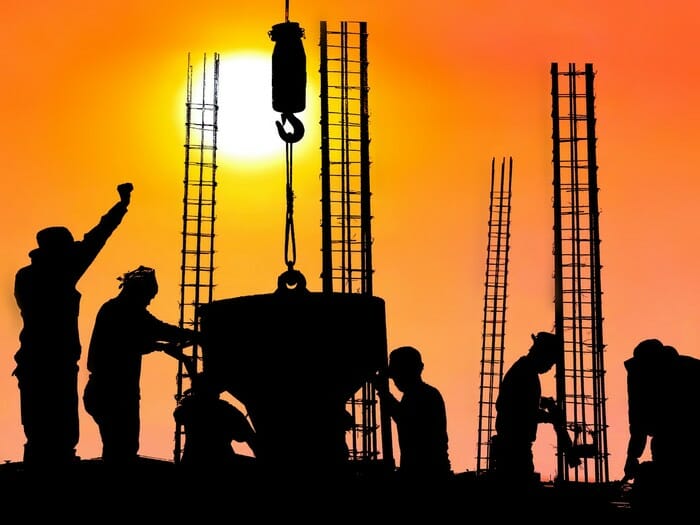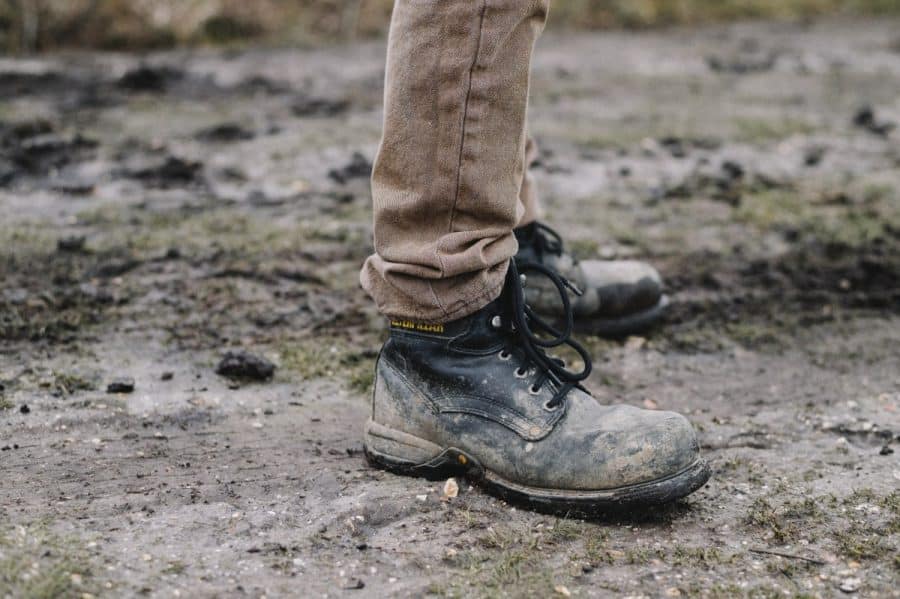Before you go Buying Boots
Table of Contents
ToggleBefore you go Buying Boots
Published in the online magazine SOS Safety Magazine September 10th, 2019
What The New and Young Worker / Greenhand needs to learn about Construction Safety
Before You Go Buying Boots
Does the phrase "The World Needs Ditch Diggers To" sound familiar? Embrace it. Construction has some very high-paying jobs. But, Before You Go Buying Boots, there are some things you need to know about construction safety. Leading the way in fatalities is the construction industry. Caused by accidents and occupational disease, construction losses 30 to 45 workers yearly in BC alone. In the last four years, WorkSafe BC reported the total death rate of all occupations numbered 555 workers. These people paid the ultimate price for their jobs. Health issues related to Asbestos were the cause of most of these fatalities. Others were the result of falling and objects striking the worker to name the next two leading factors.
.
With all these tradespeople, one constant would have decreased these numbers exponentially. Continued Safety Training and asking themselves the most important question before starting any task. “What Could Go Wrong”
.
This is why I say Before you go Buying Boots, there are some safety courses prospective workers, and new and young workers should take prior to ever walking onto a construction site. The three major courses a person should take are OFA 1, WHMIS 2015, and CSTS-09. These are vital, especially when it comes to the Greenhand, new and young worker.
.
First off, OFA I, or Occupational First Aid level 1, is an 8-hour course comprised of the basics. Bruises and band-aids for the most part. However, you’ll learn CPR, Airway and Breathing Intervention, Cervical Spine Control, Hemorrhage Controls, Minor Wounds, and Injury Management, along with a few other things. But it all starts with how to perform a Priority Action Approach to an injury location and conducting a Primary Survey on either an un-conscience or conscious patient.
.
These new skills reach far beyond the workplace. Especially if you have children, or just happened to be the first person noticing an injured individual. It’s always nice to know exactly what to do. Before You Go Buying Boots, you might even save a life.
.
Next, Before You Go Buying Boots, take WHMIS 2015 or The Workplace Hazardous Materials Information System for 2015. The world is full of chemicals. Because we not only live in a chemical factory, most work environments are one as well. WHMIS 2015 will teach you an overview of WHMIS, hazard groups and classes, labels, physical hazards, health hazards, and safety data sheets (SDSs).
.
Training courses can be found online that are very inexpensive, yet will heighten your awareness of your surroundings 10-fold. Case in point. Walking down a construction site hallway, a strange taste suddenly fills your mouth. Or a nocuous odder invades your nose, forcing you to start coughing. Is it dangerous or deadly? This course gives you the knowledge on how to find out what it is.
.
Last but not least Before You Go Buying Boots is CSTS-09. Construction Safety Training System will instruct you in the basics of, worksites and the law, personal physical care & conduct, personal protective equipment (PPE), workplace hazards, and field-level hazard assessment (FLHA) just to name a few. Compiled into 15 instructional modules, this 6-hour training program is the beginning of a worker’s safety knowledge. In addition, the worker will learn ladders & scaffolding safety, mobile equipment, machinery, and tools. One of the best pre-employment courses created. In time, further training will need to be taken.
.
Programs like Personal Fall Protection Training, Confined Space, Telehandler, and Aerial Work platform (both Telescoping AWPs and Scissor Lifts) Operation will be very beneficial. However, in my professional opinion, all future workers in construction should have the first three accomplished prior to any job site placement.
.
How easy it would be to add these 3-basic courses to the curriculum in high school. Being able to include them in any shop courses or as a stand-alone weeklong training program could be achieved quite easily. Including extra credits as well for the successful completion would improve our future workforce. The guidance counselor had a pretty good inclination on who was going to do what as a career choice in my day. She knew I was going into the trades for an occupation. I sure wasn’t going to be an astronaut, lawyer, or doctor.
.
On the other hand, what I am now is an Occupational First Aid level III. Referred to as a Paramedic in Industry. More importantly as an Occupational Health and Safety Professional, the educational part deals with WorkSafe BC Regulations and the Workers Compensation Act.
.
Performing the legal and safety aspects of my job with little to no flaws results in the first aid ticket staying in my pocket. I’ve always said, if I have to use my first aid training, I’ve failed as a safety professional. Protecting the workers and the company I work for is priority 1. Nevertheless, we are not perfect. Nor can we bubble wrap the world. Hence all inexperienced workers need construction safety training.
.
Given these points, it is only the beginning. Prior to workers starting, all are given a site-specific orientation. Information conveyed during these are the internal rules and regulations, hazards on site, reporting policies, emergency response procedures, and a host of other information. Training certifications are photocopied and stapled to the beginning of a worker's file. Provided that all goes smoothly, the 3-page orientation I designed and deliver can be conducted in 30 to 45 minutes.
New and Young Worker
Because of the fact, most new people in the trades are under 25 and have not accumulated 5 years of experience, these workers are put into a probationary phase under the Greenhand Program. This is where they receive a secondary 7-page “New and Young Workers Orientation”. This one is more in-depth and can be for the most part considered a mini training program for the Greenhand. 2 hours is common. The higher risk factor of a site, the longer time period. After which they will receive an extra sticker for their hard hat of a green hand. Even more so, a mentor within their occupational trade group will be assigned by their company.
.
Not only does this mentor watch over the green hand, but it is also every trade veterans’ responsibility to keep an extra eye open for the green hands. As a matter of fact, it's everybody’s duty to stop a new worker from what could be the beginnings of a risky and hazardous mistake. During this time Mentors are conducting on-the-job training, never being separated for any length of time, and not allowing their rookies to stray off. Starting slow and gradually increasing the complexity and responsibilities of the worker's tasks.
.
After a structured time period, usually 3 months, the worker is reviewed and evaluated by their mentor, their company foreman, and the site safety officer. Training records are examined, and if the worker is ready, they are graduated. This is where I as the site safety officer actually get to have a little fun at their expense. Once a month, in addition to the weekly toolbox talks each subcontractor must conduct, I perform a full site safety meeting.
.
For 15 to 45 minutes the entire site shuts down for a safety talk. Starting off is the senior site superintendent or their representative. They discuss what concerns they are noticing on site. This can be about safety, or whatever subject they choose. Most speak on production and give thanks for the hard work the crew has put in.
.
Afterward, it’s my turn to speak. I’ll give a construction safety talk, or a demonstration, followed by the Greenhand graduation. They have no idea that it’s coming. In a loud stern voice, I’ll bark out their names in full, directing them to the center of the circle where this safety meeting is taking place. On some sites, the circle of personnel can be as high as 200 or 300 people. With a nervous look on their faces, the Greenhands come to the center and stand before me.
.
Unwittingly to them, they failed to notice their mentor has followed right behind. I’ll start off by asking them if they understand what safety is on a construction site. Thinking they might be in some trouble, all without hesitation answer “YES”. With a piercing look, I'll reply, “Really, then answer me this” as I begin asking some basic safety-related questions.
.
You can now see sweat forming on the brow and trickling down their faces. After 5 minutes or so, I’ll ask the Greenhand mentors if they have in fact learned anything about construction safety. Hopefully in unison, they always answer “YES”. At this point I tell the rookies to tear off that green hand sticker, proclaiming “You’ve graduated” as I present them with a brand-new set of 50/50 half mirrored safety glasses.
.
Meanwhile, the entire site erupts with cheers, whistling, and applause. The smiles on their faces stretch from ear to ear is evidence of their excitement. By the same token, the feeling of achievement instills a new level of self-worth. More importantly, this little action is a stress reliever for the whole crew and brings everybody closer together, almost like family. In turn, injuries go down, all due to workers watching out for one another.
.
Are you now going to go buy a set of boots and become a Greenhand? Spend the money and buy good ones. You could be wearing them for 10 to 12 hours a day. In conclusion, if you're going into the trades, take the 3 courses mentioned. Stay alert and learn all you can.
.
So, Before You Go Buying Boots, remember to always ask that one question prior to every task. “What can go wrong?” The answer you get is the risks you’ll take from the hazards you’ll face. As a final point, do not under any circumstances start with the attitude that you know more than you do. That’s what will lead you to see me again after the orientation in one of two capacities. As the site safety officer who has to explain what your doing isn’t right, or as the first aid attendant who’s trying desperately to save your life.

Before You Go Buying Boots


Pingback: Construction Worker Safety * What New and Young Workers Need to Know
Pingback: Blogging About Construction Safety, Accidents, WCB Act of BC, Events